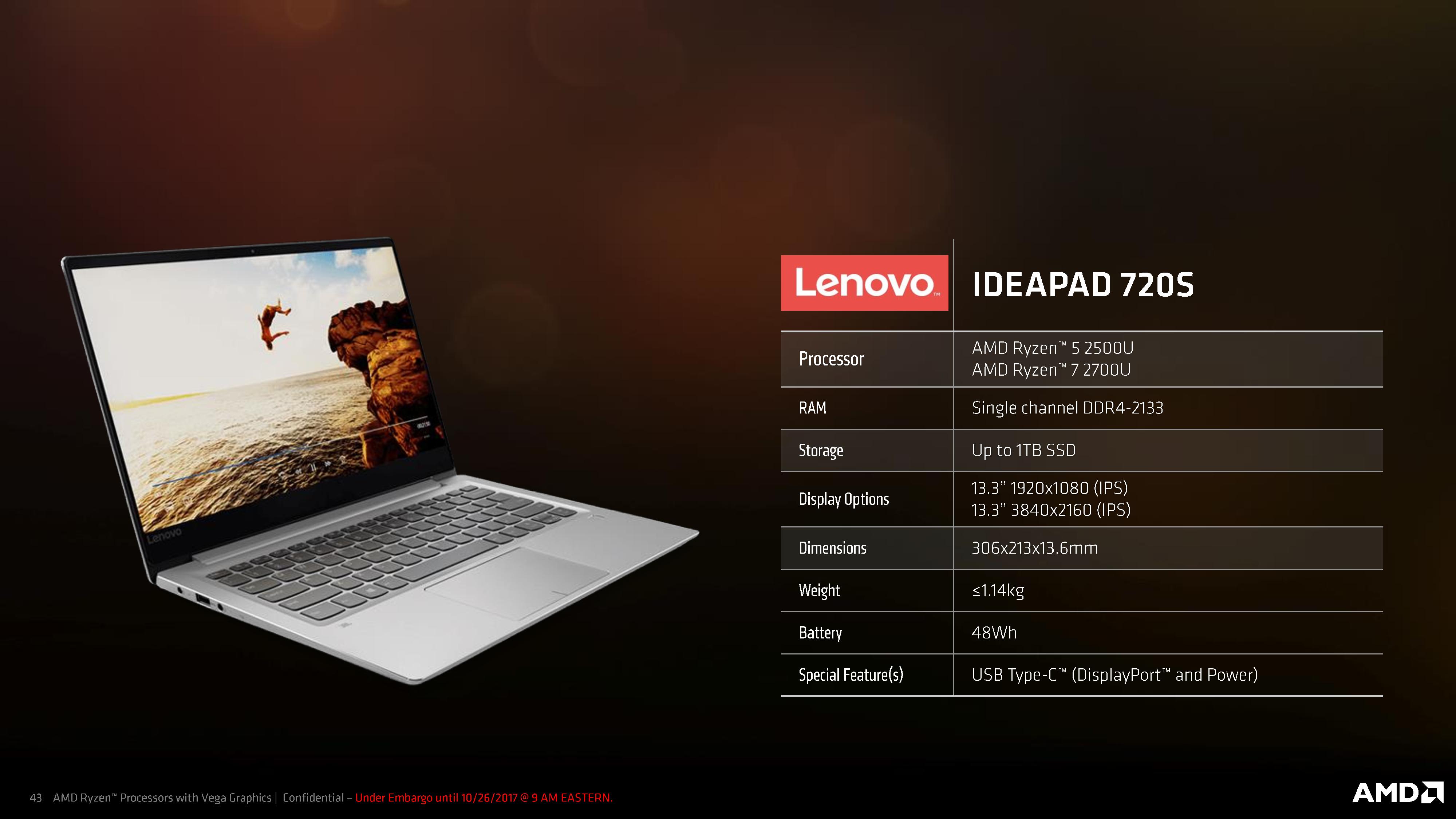8350rocks :
-Fran- :
goldstone77 :
-Fran- :
https://www.anandtech.com/show/11964/ryzen-mobile-is-launched-amd-apus-for-laptops-with-vega-and-updated-zen
All I can read there is "hot, steamy and very wild sex".
I have to admit I don't like they're aiming for ultra/super thin devices first, but I can see why they might be. All I can see in the shelves as of late from OEMs are systems that try to be sleek first and useful second. I hope AMD strikes a balance there Intel can't really get with their GPU. I can't wait for official reviews!
Also, Zen 1.5; man, if only someone would have guessed! Yes, I'm being sarcastic. EDIT: Ok, it's not the Zen core itself, but the power controls instead. So, strictly speaking, there is not a pure performance jump due to IPC. Bummer.
Cheers!
All I can read there is "hot, steamy and very wild sex".
I have to admit I don't like they're aiming for ultra/super thin devices first, but I can see why they might be. All I can see in the shelves as of late from OEMs are systems that try to be sleek first and useful second. I hope AMD strikes a balance there Intel can't really get with their GPU. I can't wait for official reviews!
Also, Zen 1.5; man, if only someone would have guessed! Yes, I'm being sarcastic. EDIT: Ok, it's not the Zen core itself, but the power controls instead. So, strictly speaking, there is not a pure performance jump due to IPC. Bummer.
Cheers!
I think they have a much better product now, and they will do well as long as the price is right!
The numbers quoted by AMD itself are the ones that were posted a few months ago in the thread; or at least they're very in-line with them. So the performance of the APUs is decent, but not really breath taking. I still don't like the way the marketing teams present the data. The i7 used seemed to be really thermal limited in the notebook and i suspect it might have been limited with other factors, since the i5 was actually better in everything.
That being said, I do agree it's a good product and they need to make people realize it, so they can actually sell. I hope HP, Acer and Lenovo don't offer sucky laptops.
Cheers!
Also, the turbo core technology they have been working on since the discovery tablet is finally coming to market on tech that consumers can get.
Expect that in Zen+ and moving forward.
I would almost buy that lenovo as it stands, but single channel memory kills it for me.
2700U + 500GB SSD and about 8 GB RAM and that is all I need from a slick lightweight notebook.
Yeah but i expect manufactures to cheap out and use only one ram slot hurting the APU's performance in gpu tasks.


